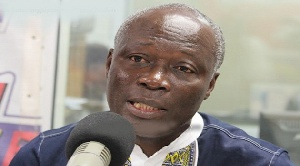The current gas supply of 70 million cubic feet per day from Nigeria via the West Africa Gas Pipeline is expected to increase to about 90 million cubic feet in the next two months, after remedial works on a section of the pipe in Nigeria.
A militant attack that damaged one of the loops in the pipeline in Nigeria caused a reduction in gas supply over the past three weeks, Kweku Andoh Awotwi, Chief Executive Officer of the Volta River Authority (VRA), said.
“It’s not great, as we were expecting 120 million cubic feet; we are only getting 70 million, but it’s better than nothing,” said Awotwi.
“The reason why it’s running at 70 million cubic feet is that there was militants damaged the Nigerian pipeline a few weeks ago, and it affected one of the loops in the pipeline. They are hoping to get it fixed by September or October. When that happens, more gas will come into the Nigerian system, which means a bit more will come to Ghana. We expect that the 70 million cubic feet will go up to 90-95million cubit feet.”
With the expected increase in flow of gas, the electricity producer will be able to run an additional installed unit on gas to bring on-stream more power. Sustained and regular supply of gas at the expected level will also significantly reduce the financial demand in generating thermal power, Awotwi said.
Electricity demand currently stands at about 1,800 megawatts per day. The VRA, with a total installed capacity of 2,100 megawatts, generates about 1,600 megawatts of electricity -- both hydro and thermal -- every day.
The Authority says it spends US$15million every 30 days to procure expensive crude to power its thermal plants not running on gas.
Bui, CENIT, and Sunon Asogli power plants together produce about 400 megawatts of electricity to supplement what the VRA produces.
With a growing population and the emergence of a large middle-class who have a taste for modern electronic gadgets associated with urban living, electricity demand and consumption power is growing at 10 percent per annum.
This presents a huge challenge and an opportunity for exploring viable projects that will add to the existing installed capacity as well as enrich the energy mix to meet future demand.
The VRA is therefore conducting feasibility studies for the construction of wind-power facilities in selected parts of the country.
The Authority and its partners plan to construct eight wind farms in the coastal towns of Winneba, Ada-Keta and Techiman and Gambaga.
It also plans to increase the current two megawatts of solar energy production to about 200 megawatts by 2020.
Business News of Wednesday, 28 August 2013
Source: B&FT
More gas supply next month
Entertainment
















